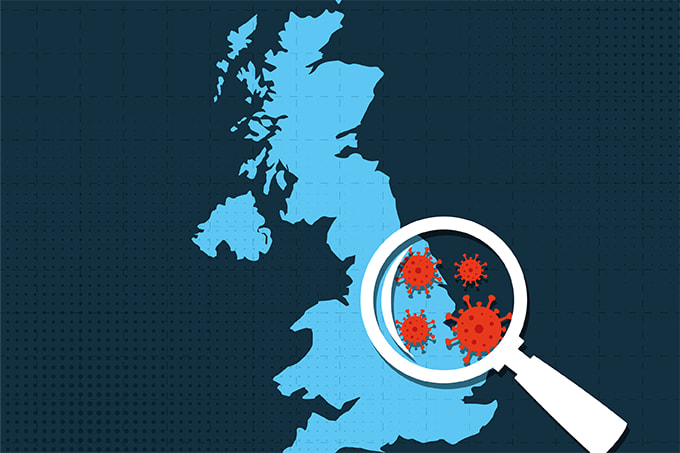H5N1 bird flu continues to spread across the United States, and has been identified in other mammals. Thankfully, a national proficiency testing program is being introduced in the US in fall 2025 to help laboratories detect and accurately identify the H5N1 strain of the disease. Bobbi S. Pritt, Chair of the Division of Clinical Microbiology at Mayo Clinic and Chair of the CAP Microbiology Committee, joins us to discuss how this program supports national preparedness.
What are the current diagnostic challenges that laboratories face in distinguishing H5N1 from seasonal influenza?
The main challenge is that clinical symptoms and early presentation of H5N1 can overlap significantly with seasonal influenza, especially in the absence of epidemiologic clues like avian exposure. While multiplex respiratory panels can detect seasonal influenza A and B, many don’t identify the specific subtype – and even fewer can detect H5N1.
In many laboratories, H5N1 identification still requires reflex testing at public health labs or use of laboratory-developed tests (LDTs), which limits turnaround time and availability. Staying alert and properly managing unusual influenza A results – such as unsubtypable strains – remains a major challenge for lab operations.

Why is it important to simulate real-world patient specimens in proficiency testing for emerging infectious diseases?
Proficiency testing using real-world specimen matrices helps ensure that labs are not just theoretically capable but practically competent in detecting emerging pathogens. Clinical specimens can vary in viral load, matrix complexity, and co-infection profiles – conditions that are rarely captured in idealized controls. Testing with clinically relevant specimens also simulates workflow stress points, such as preanalytical processing or result interpretation challenges. This builds confidence in both assay performance and staff readiness, enabling faster and more reliable identification of true positives during an outbreak.
What do you see as the most pressing needs for diagnostic labs to stay ahead of evolving respiratory pathogens like H5N1?
We need flexible diagnostic platforms – ideally using instruments and systems that are already available in clinical laboratories, real-time access to validated assays (including LDT options when necessary), and robust data-sharing networks with public health partners.
Additionally, workforce training is essential – technical staff must stay proficient in relevant techniques such as high complexity PCR and biosafety protocols. Supply chain resilience and ready-to-deploy standard operating procedures for surge capacity and unusual pathogens are also critical to staying ahead.
What lessons from past respiratory outbreaks are informing how laboratories approach H5N1 surveillance today?
The COVID-19 pandemic underscored the value of rapid test deployment, decentralized testing capacity, and clear communication across clinical, laboratory, and public health sectors. It also revealed gaps in reagent supply chains and workforce fatigue during prolonged surges. For H5N1, some labs are able to apply these lessons by developing scalable testing infrastructure, validating protocols in advance, and integrating H5N1 surveillance into existing influenza workflows. Enhanced genomic surveillance capacity post-COVID is now better positioned to detect emerging clades or mutations of concern.
In the event of human-to-human transmission of H5N1, what immediate actions would you recommend for diagnostic laboratories?
While needs may differ among diagnostic laboratories, some immediate actions to be considered are:
Review your current flu testing capabilities. Can your lab identify flu subtypes? Do you have a way to detect H5N1 specifically? Labs should assess this immediately.
Coordinate with public health labs. H5N1 testing will likely be limited to these labs, so it’s important to establish workflows now. Lab leaders should also decide which patients need confirmatory testing and which can be managed without it.
Plan for a testing surge. This includes making sure you have enough staff, supplies, and space for a potential rise in respiratory testing.
Update clinical teams. Make sure they know about any testing limits and how to triage patients for possible H5N1.
Follow biosafety protocols. Use appropriate PPE and adjust how you handle samples. Refer to CDC and other official sources for up-to-date guidance, as recommendations may change quickly.
Early action is vital to preventing diagnostic backlogs and ensuring timely public health responses.
How should diagnostic labs balance urgent pandemic preparedness with maintaining their ongoing routine testing responsibilities?
This balance requires built-in surge capacity, including cross-trained personnel, flexible testing platforms, and modular workflows wherever possible. Routine operations must continue to support high-acuity patient care, so the laboratory should consider developing tiered contingency plans that prioritize high-impact assays (eg, blood cultures and respiratory panels) while scaling up pandemic-specific diagnostics. Clear prioritization frameworks and close coordination with hospital incident command can help labs shift resources strategically during periods of high demand. As mentioned above, these are considerations that the lab should be exploring now so that they are prepared, should an outbreak occur.
What else should labs consider for pandemic preparedness?
Laboratory preparedness isn't just about technology – it's about people. Empowering laboratory staff through training, communication, and involvement in institutional preparedness planning ensures we aren’t caught out when the next respiratory threat emerges.
Also, maintaining relationships with public health labs, manufacturers, and clinical teams helps create a nimble and responsive diagnostic ecosystem. As we learned during the peak of COVID-19 transmission, pandemics will test not just our instruments, but our systems and the resilience of our workforce.




